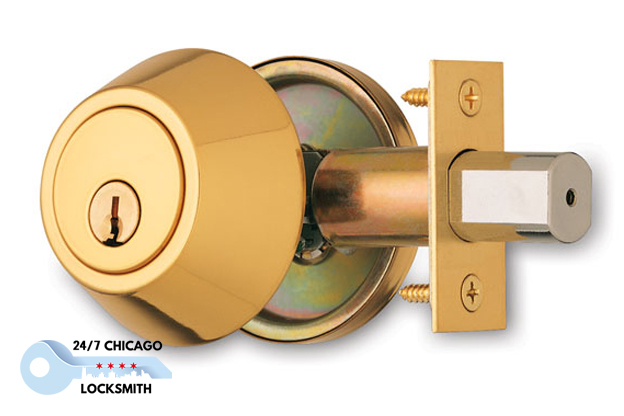In this brief and informative blog entry, the lock and security mechanism experts here at Chicago Locksmiths will detail some of the complicated mechanical anatomy of door locks and deadbolt locks.
Door Lock Parts
- Cylinder – This body area of the lock is where the key is placed into. When the lock is activated, spring loaded pins are activated, keeping the cylinder from turning.
- Bolt – This device, also known as the latch, holds the door closed through an extending piece of metal moving between the door and straight into the door frame.
- Box – The bolt moves from the cylinder into a dedicated hole known as the box. The box holds the bolt in a single placement when the door is locked, preventing one from being able to pull the door open.
Deadbolt Parts
- Bolt – the Deadbolt is a piece of metal that moves from the door straight into the frame, locking inside the frame to stop someone from being able to open the door from outside.
- Thumb Latch – This part of the deadbolt moves from the surface of the door, allowing you to rotate and deactivate the deadbolt from the inside.
- Turnpiece – This part of the lock moves through the door from the cylinder, it’s connected through a thumb latch. This allows users to lock and unlock the lock.
- Keyhole – This is the area in which the key is inserted, allowing you to operate the lock.
Strike Plate and Rosette Definitions
The strike plate helps keep the door’s bolt in place when it’s locked. When the door closes, the latch strikes on the plate, holding it close. Another type of plate that is often held behind door knobs are what’s called the rosette. This plate is held behind the door knobs, it holds the doorknob in place and stops it from rattling when you turn the door knob. The rosette helps to add a different level of security and helps the doorknob last longer.

